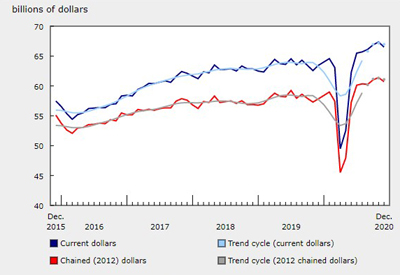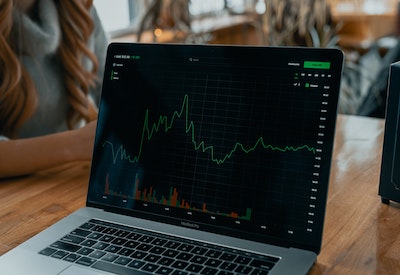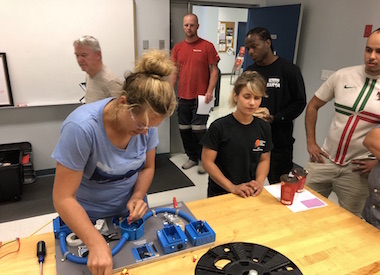Eight Habits of High-Gross-Margin Distributors

Oct 26, 2018
The ultimate goal of most companies is to improve their profit margins, and distributors are no exception. In fact, distributors may focus on this more than manufacturers or retailers, since they effectively connect the two sectors and don’t have the control or influence over raw materials and suppliers that manufacturers and retailers possess.
Distributors are also at the mercy of logistic elements like transportation costs that fluctuate and impact an already tight gross margin. With increased competition and market pressures, it’s a smart time for distributors to examine what they can do to improve their margins and learn from others who are doing it well.
In this article, we’ll cover the top eight habits that distributors showcase to achieve high gross margins. You may already possess some of these habits. You may find that some are right for your business and others are not. You may have subscribed to some in the past, but they fell out of practice. Whatever the case, we’re hopeful this article will serve as a reminder of things you can do — or a confirmation of the things you’re already doing — to help improve your profit margins.
1. Establish a pricing committee that meets on a regular basis
Pricing decisions require a combination of sales, finance, marketing, purchasing, and operations information. Consequently, your pricing committee should consist of key members from those departments — or at least be able to gather information from them. The goal is to have all the stakeholders involved to provide a good understanding of the product portfolio, competitive pressures, and historical performance.
Additionally, pricing is more of journey than a destination. Pricing in competitive markets is usually a derivative of many factors including customer size, customer class, product line, item velocity, stock vs. non-stock, and more.
Typically, these factors change on a regular basis, so it’s important to analyze your pricing on a regular basis as well. The frequency of the meetings can be directly related to how often your pricing factors fluctuate. They should only occur as often as they’re useful to the business, but they should be more than once per year. If your pricing is more than a few years old — meaning it hasn’t been edited, changed, or tweaked in years — it’s time to look at an update.
2. Define a profit margin goal
The next step high-gross-margin distributors take is to define a profit margin goal. Sounds simple enough, right? However, for many distributors, there is no goal. Sales reps understand and attempt to keep margins up, but it’s difficult to achieve success without first determining a goal. The goal needs to be carefully thought out — it’s important that it isn’t extreme or arbitrary. It’s actually better to have a simple, straightforward, and achievable goal — like an average gross margin of 22%. Additionally, if the current margin is below the goal, having a time-sensitive, specific goal is important—for example, increase gross margin a half point over the next year, from 21% to 21.5%.
Beyond outlining the measures you’ll take to achieve that goal — whether it’s focusing on specific products in your portfolio or working on pricing with your suppliers — you’ll also need to make sure that your team can execute on the goal by clearly communicating expectations throughout the sales organization. In order to get employees on board with the goal, it needs to make sense to them — harkening back to the achievable message. There’s nothing more deflating to a sales rep than to feel like their goals are unattainable. You want them to be fully on board with the plan so that they’re thinking about it in every discussion with the customer. You want them to ask, “Can I achieve the gross margin goal with this customer, with this line of business, or with this product?”
3. Use list less pricing whenever possible
There are a variety of pricing strategies used by distributors. There is cost plus, list less, fixed pricing, and the old standby gut feel. All of these strategies have their strengths and weaknesses, so how do you choose which is best for your business?
Industry best practice is to have a go-to market pricing strategy of list less pricing, using cost-plus and fixed pricing only when necessary. Here’s why.
Fixed pricing involves setting a fixed price for every item. Typically, this type of pricing is used to match or beat the competition on high-visibility items. It’s a great tool for that purpose, but it’s incredibly labour intensive, requiring you to manually set specific prices for every customer/item combination that requires a fixed price.
Cost plus is the simplest pricing method. You set prices by taking the product cost and applying a mark-up. It’s the easiest method for sales reps to use and the most straightforward, but it has drawbacks. That information is often shared with customers, reducing any opportunities to sell at higher margins to make up for deals you had to give away. Over time, you may find your sales reps applying the same mark-up to all items, regardless of the vendor, product line, or velocity of the item.
Cost plus also eliminates any benefits of lower purchasing costs. In other words, lowering purchasing costs has the impact of lowering sell price and gross margin. Lastly, there are limits to what the average sales reps can charge a customer. For example, if you have a 10-dollar item, the sales rep can charge cost plus 20 or 30% — maybe even cost plus 50%. Could the rep charge cost plus 150%? Probably not.
List less, taking the list price of an item and discounting it by a certain percentage, is the method most likely to result in the highest margin for distributors. First of all, you are not associating your price with the customer’s cost. Customers are smart. If you tell them a product is cost plus 20%, they can easily determine the price you paid. With list less, the math is harder. Cost plus 20% could actually be list less 50%, which sounds a lot better to a customer than cost plus 20%. This also gives the impression that the customer is receiving a big discount, which they may associate with negotiating well and more buying power.
4. Understand that not all customers and products are equal
If your gross margin goal is 22%, it would seem simple to just apply that to each and every item. However, it’s not that easy. Customers will negotiate on high-volume items, there will be large orders with different pricing, and you may even have large customers who demand cost plus 20%. For every time your margin dips below your goal, you’ll need a sale on the opposite side of the goal to balance it out. To do this, you need to look to item and customer stratification.
Stratification involves classifying items and customers into categories. Items might be classified by product code, velocity, or even velocity within product code. Customers might be classified by type, sales volume, and geography. Pricing is then structured to find the optimal price for each customer/item classification. Essentially, this means you find the price that allows for the highest margin you can obtain while still retaining the customer’s business.
5. Establish thresholds and approval processes
Having a defined pricing structure is ideal, but there are always exceptions. Occasions arise when the sales repneeds to provide a better price to be competitive and get the business. Thresholds should be set for every product line so that sales reps can be empowered to make decisions on the fly.
However, there may be instances when the sales reps would like to drop the price below your goals for the item. Your business should establish a formal review process to analyze the justification for the exception. This process, which could involve as few or as many people and steps as you deem necessary, should be clearly communicated across the sales organization, and key stakeholders in the process should be instructed to make their responsibility in the process a priority so as not to hold up any potential sales or lose business to a competitor.
6. Understand value-added services, and how to charge for them
It’s surprising that distributors are still offering value-added services to their customers without charging appropriately for these services. It’s true that value-added services will differentiate your company from the competition and foster goodwill with your customer base. However, there’s nothing noble about giving away services for less than they’re worth. From inventory management to consultative services, distributors may be missing out on larger revenue streams that can improve their bottom lines.
High-gross margin distributors understand the worth of these services and charge appropriately for them — and “appropriately” doesn’t have to mean “a lot.” When exploring how to price value-added services, you have to look at the value of the service itself, the market standard, and what the customer is willing to pay. If you’re considering beginning to charge for something you had previously provided for free, you’ll want to analyze your strategy based on these aspects. Plus, you need to factor in your goals.
7. Understand how to monetize customer service
There is real value in providing extraordinary customer service, and — like value-added services — you can command a premium for doing this right. For example, online apparel retailer Zappos is renowned for their customer service, and Volvo will fly you Sweden to pick up your brand new car right off the line.
Everyone has experienced poor customer service at some point. No one wants to feel stuck with a distributor that doesn’t treat them well. If they do, customers will look for alternatives, even if that means they may pay more for goods and services. Alternatively, distributors that provide exceptional customer service will see better customer retention rates and may find that they don’t need to provide discounts or incentives to keep their customers coming back.
8. Walk away from unprofitable business
This may be the hardest part of being a distributor. There are going to be times when you need to walk away from business. Realize that low-margin business — even when it may be profitable on an order-by-order basis — has the potential to erode margins. If this is the case, you need to make the decision to transition away from these customers.
This is definitely easier said than done. You probably have long-standing relationships with the customers that these changes would impact. You may feel like this strategy will harm that relationship and you’ll lose the customer — and maybe even other customers in the process. There are many ways to plan and implement these types of changes, but the best thing you can do to retain customers and keep relationships strong is to clearly communicate changes and set realistic expectations for your customers. In a perfect world, your customer relationships are strong, and your level of customer service makes up for enacting these changes. If this isn’tthe case, start working to solidify customer relationships now while you’re in the planning phase of the strategy.
This article was first published online by Epicor, which offers solutions that enable distributors to live the habits described throughout this white paper—like advanced business intelligence and analytics, strategic pricing tools, support for value-added services, inventory optimization capabilities, warehouse management, and much more; www.epicor.com/industries/distribution.aspx











